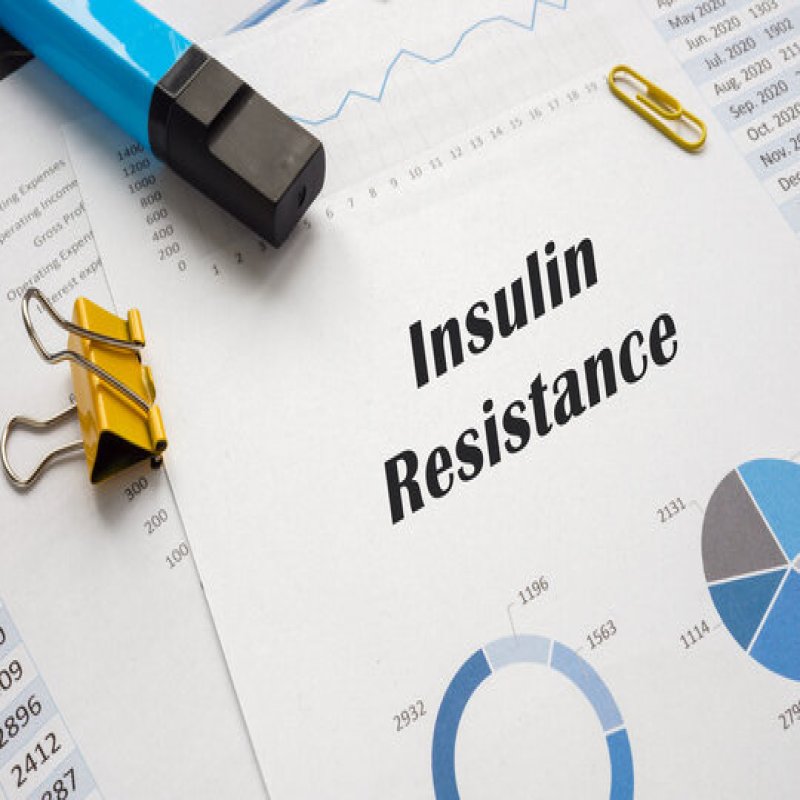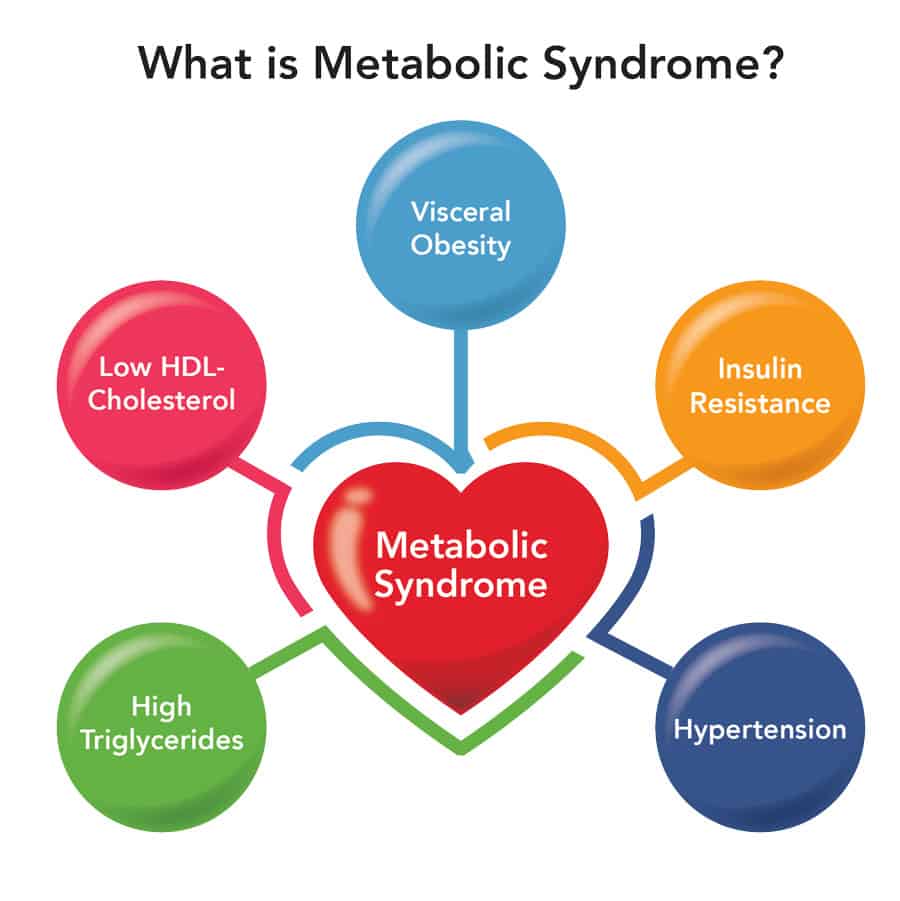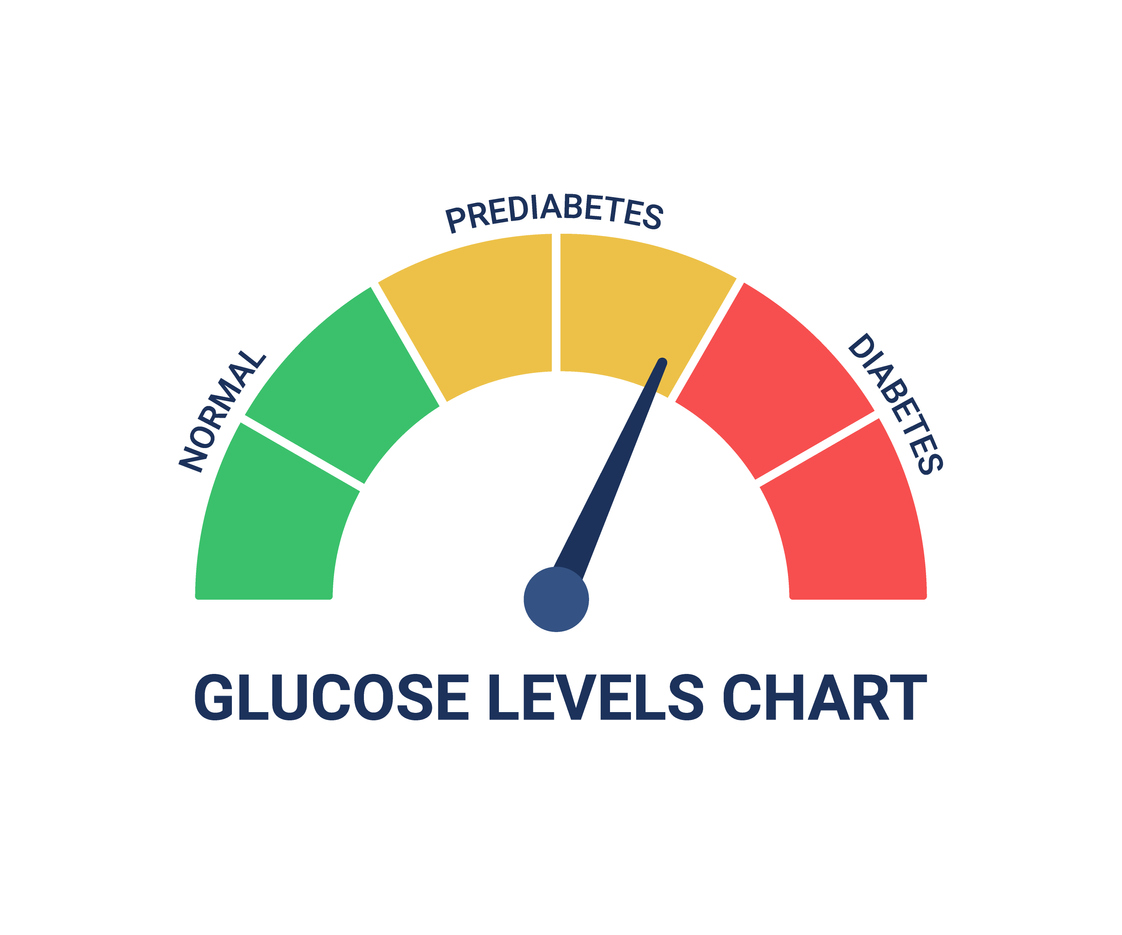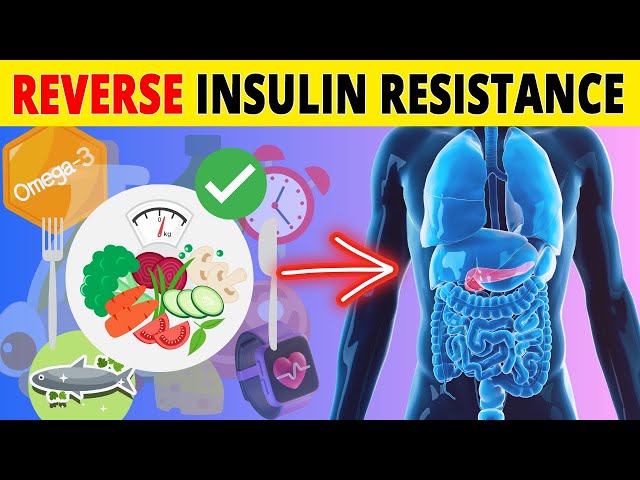
What is Insulin Resistance?
Insulin resistance occurs when the cells in our muscles, body fat, and liver start resisting or ignoring the signal or command that the hormone insulin is trying to send out. The command is for the cells to use glucose from the bloodstream and put it into our cells. Glucose, also known as blood sugar, is the body’s primary source of fuel. We get carbohydrates from grains, fruits, vegetables, dairy products, and drinks, which are broken down into glucose. But when there is insulin resistance, the cells are unable to absorb the glucose and turn it into energy. This means more glucose keeps piling up in the bloodstream, and the pancreas produces more insulin to help the glucose enter the cells. After a point, the excess glucose levels in the bloodstream reach critical mass and may lead to prediabetes and diabetes.
While genetics, aging, and ethnicity play roles in developing insulin sensitivity, the driving forces behind insulin resistance include excess body weight, too much belly fat, a lack of exercise, smoking, and a lack of proper sleep.
Stress can be a major contributor to insulin resistance. When we experience stress, the body releases hormones such as cortisol and adrenaline, which can cause a temporary rise in blood sugar levels. In response, the pancreas releases insulin to help regulate blood sugar levels and bring them back down to normal.

As insulin resistance develops, your body fights back by producing more insulin. Over the months and years, the beta cells in the pancreas that work so hard to make insulin get worn out and can no longer keep pace with the demand for more and more insulin. Then, years after insulin resistance is silently initiated, blood sugar starts to rise, and you develop prediabetes or type 2 diabetes. You may also develop Non-Alcoholic Fatty Liver Disease (NAFLD), a growing problem associated with insulin resistance that boosts the risk of liver damage and heart disease.
Signs and Symptoms of Insulin Resistance
Insulin resistance is usually triggered by a combination of factors linked to our lifestyle: excessive body fat, weight, age, genetics, being sedentary, chronic stress, and smoking.
You Develop Dark Skin Patches: If insulin resistance is severe, you may experience visible skin changes. These include patches of darkened skin on the back of your neck, your elbows, knees, knuckles, or armpits. This discoloration is called acanthosis nigricans.
Large Waist: The best way to tell whether you’re at risk for insulin resistance involves a tape measure and a moment of truth in front of the bathroom mirror. A waist that measures 30 inches or more for women and 35 inches or more for men increases the odds of insulin resistance and metabolic syndrome, which is also linked to insulin resistance.
There are additional signs of metabolic syndrome: According to the National Institutes of Health, in addition to having a large waist, if you have three or more of the following, you likely have metabolic syndrome, which creates insulin resistance.

High Triglycerides: Levels of 150 or higher, or you are taking medication to treat high levels of these blood fats.
Low HDL (high-density lipoprotein): HDL levels are below 50 for women and 40 for men or you are taking medication to raise high-density lipoprotein (HDL) levels.
High Blood Pressure: Readings of 130/85 mmHg or higher, or you are taking medication to control high blood pressure.
High Blood Sugar: Levels of 100–140 mg/dl (the prediabetes range) or over 140 (diabetes).
High Fasting Blood Sugar: Mildly high blood sugar may be an early sign of diabetes, or you are on medication to treat high blood sugar.
Health Conditions Related to Insulin Resistance
An estimated 40 percent of the population worldwide has prediabetes; about 30 percent will develop full-blown type 2 diabetes. In addition, up to 80% of people with type 2 diabetes have NAFLD. But those aren’t the only threats posed by insulin resistance.

Thanks to years of high insulin levels followed by an onslaught of cell-damaging high blood sugar, people with insulin resistance, prediabetes, and type 2 diabetes are at increased risk for cardiovascular disease. Insulin resistance doubles your risk for heart attack and stroke—and triples the odds that your heart attack or brain attack will be deadly, according to the International Diabetes Federation.
Meanwhile, insulin resistance and metabolic syndrome are also linked to a higher risk for bladder, breast, colon, cervix, pancreas, prostate, and uterus cancers. High insulin levels early in insulin resistance seem to fuel the growth of tumours and suppress the body’s ability to protect itself by killing off malignant cells.
Research has also found a strong association between insulin resistance and memory function decline, increasing the risk for Alzheimer’s disease.
How can you Reverse Insulin Resistance?
Losing fat, exercising regularly, and getting proper sleep can all help improve your insulin sensitivity. Don’t rely solely on the "eat less, exercise more" mantra.
In one fascinating University of New Mexico School of Medicine study, published in the International Journal of Obesity, overweight people who lost 10% of their fat through a proper (LCHF) diet plus exercise saw their insulin sensitivity improve by an impressive 80%. Those who lost the same amount of weight through diet alone saw a 38% increase. And those who simply got more exercise but didn’t lose much fat saw almost no shift in their level of insulin resistance. Researchers have also found that just one night of sleep deprivation boosts insulin resistance by as much as eating high-sugar foods for six months.
So, take a holistic approach to your health to eradicate the root cause of "insulin resistance" for most of the lifestyle diseases mentioned above.

Conclusion
Insulin resistance is the root cause of many lifestyle diseases, including type 2 diabetes, heart conditions, obesity, high blood pressure, and NAFDL. Adopting healthy lifestyle habits, such as eating a balanced diet, managing stress, exercising regularly, and getting adequate sleep, can help reverse insulin resistance and its associated problems.


.png)


